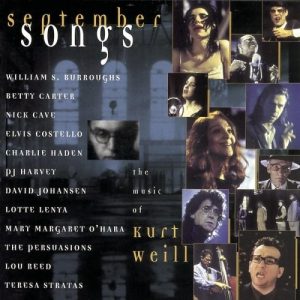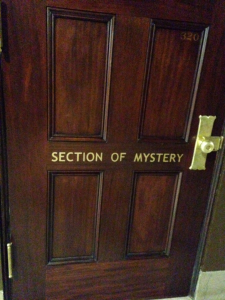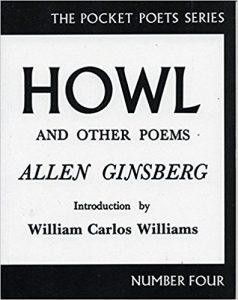Ballad of the Soldier’s Wife
Song by Kurt Weill; performed by PJ Harvey
The great American songbook had pretty much taken hold before I arrived on the scene. The songs inundated all aspects of life. As much as old folk songs seemed to have existed forever, the music of Cole Porter and Hoagy Carmichael felt as timeless. The reality is that recording artists like Frank Sinatra and Ella Fitzgerald created the conceit of the songbook when they selected the tunes that they would record. The public doubtless had a hand in deciding which ones to remember.
However, this melding of all this music into an omnipresent culture meant that the original composers became just as remote as those who had written Jingle Bells. Admit it- the very idea that somebody first put those notes and those words together in that order seems slightly ridiculous. It must have come to them in a dream, unless the artist was in fact a creation of our own imagination.
So, rather than Richard Rodgers, I noticed Kurt Weill as the person who composed classic songs. This was the result of a few factors. Modern pop artists started doing tribute albums at the perfect time for the radio to play them and for me to take notice. The songs had not formed the complete background to my life, but they were not unfamiliar.

Some of that was because of Bobby Darin’s ever-present hit with Mack the Knife. More than that, Weill composed music that sounded like it was something that you always wanted to hear. Add to that the always impressive feat of being the one who created the tune and the lyrics and you had my attention.
If you checked out any of those videos linked above, then you noticed something else. For that matter, if you ever really listened to Darin’s hit, then you are also attuned to the fact that Weill’s songs are a few yards out of bounds. They are weird, in that they come at the world from a peculiar angle. Many are show tunes and every musical has a couple wacky songs, but everything Weill did stands out just a little from the page.
Perhaps it goes back to that great American songbook, but the ear grows accustomed to certain notes appearing in a certain way. Weill never shocks so much that you run to the radio screaming, but it is not easy to pretend that his songs are mere background. They demand attention.
No other composer is as inextricably intertwined with a single performer as Weill is with Lotte Lenya. They were married twice and her recordings heavily emphasize his works. The performers I mentioned came along after her and kept Weill’s music alive, but she did the heavy lifting after he died (and probably a fair bit while he lived). For all that, I saved another favorite for these last words.
What’s it all about?
You’ve Got to Check This Out is a blog series about music, words, and all sorts of artistic matters. It started with an explanation. 83 more to go.
New additions to You’ve Got to Check This Out release regularly. Also, free humor, short works, and poetry post irregularly. Receive notifications on Facebook by friending or following Craig.
Images may be subject to copyright.

